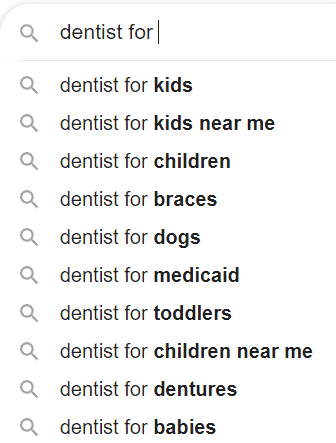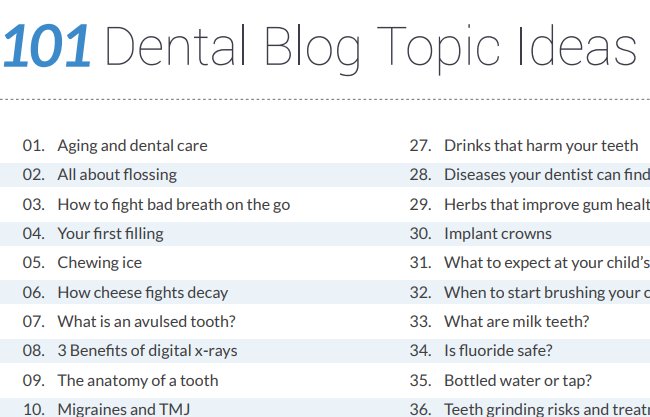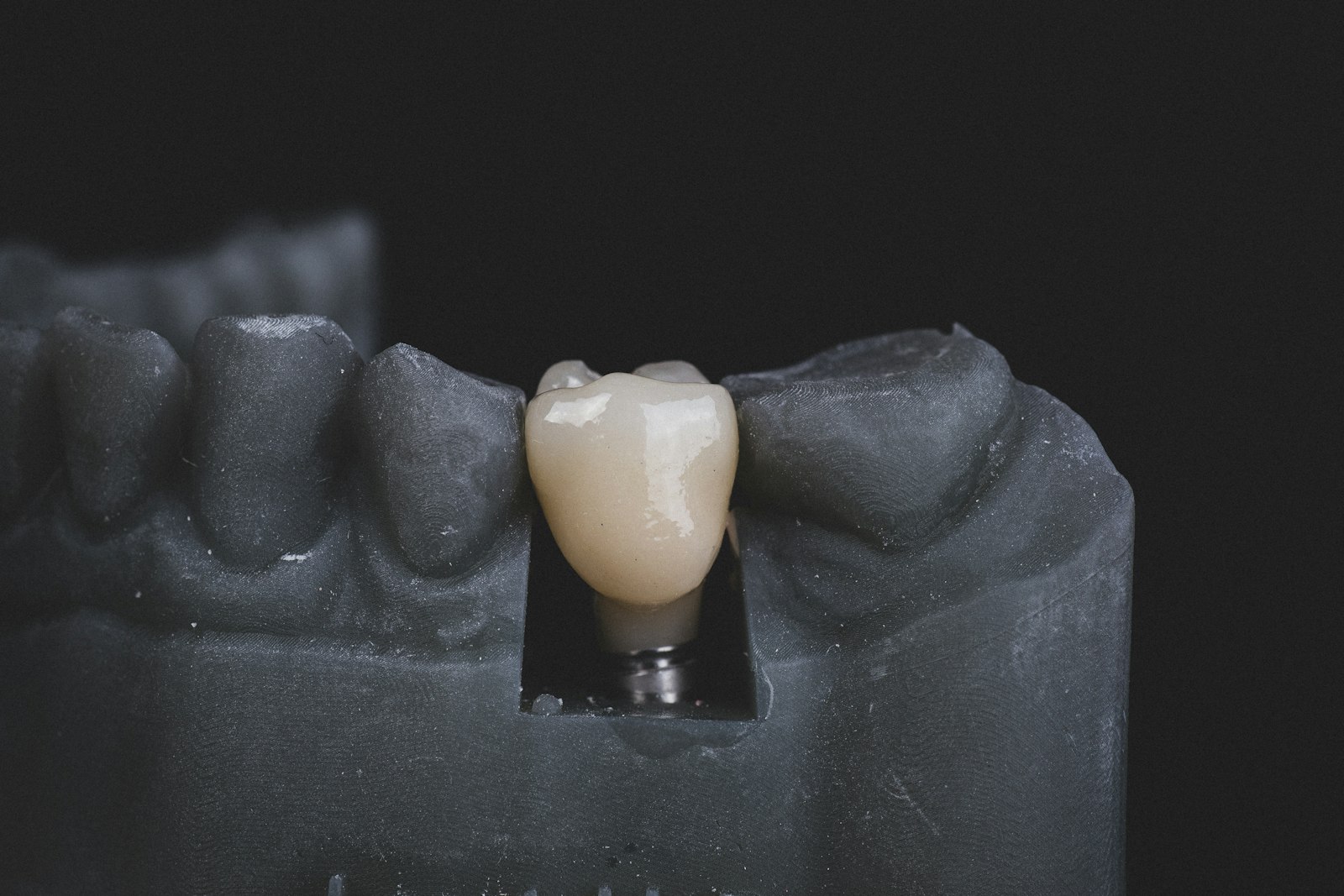Searching for a new dentist is never a particularly enjoyable experience. As patients, we often feel overwhelmed when trying to evaluate dozens of potential practices in our area. Fortunately, with a sound SEO strategy, dental practices can differentiate themselves online and attract new patients more easily.
After working with dozens of dentists to improve their web presence and intake, I've compiled my top SEO tips for dentists hoping to expand their patient roster and stand out online. While no two practices are identical, this comprehensive guide aims to provide actionable advice for dental teams of all sizes and specialties. Let's get started!
Laying the Groundwork: Useful Frameworks for Approaching Dental SEO
Implementing an SEO strategy may seem intimidating at first. By keeping a few core concepts in mind, though, you can maintain focus and ensure you're making progress:
SEO is a Long-Term Strategy
Google and other search engines regularly tweak their algorithms. While you may see quick wins from some tactics, sustainable success requires playing the long game. Be patient, focus on quality content and patient experience, and let your authority build steadily over months and years.

Keywords Must Connect to Full User Journey
The keywords and phrases you target should map not only to the services you offer, but also to every step in the patient journey. From early research questions to post-procedure care, craft relevant content around users' evolving needs.

Local SEO Hinges on Reviews
Positive online reviews are social proof for prospective patients assessing new dentists. Making review generation and management a priority is fundamental, as a solid base of 5-star ratings lends legitimacy within search engine results.
Keeping these principles in mind, let's explore actionable tactics to boost your dental practice's SEO and online presence.
Dental SEO Tactics to Focus On
Create Thorough, Helpful Landing Pages
For key services like dental implants, veneers, Invisalign, and teeth cleaning, craft dedicated pages that prospective patients would find useful:
- Clearly explain what the service entails
- Detail pricing and insurance coverage
- Highlight biographies of doctors who perform the procedure
- Share before/after photos and videos when applicable
- Respond to FAQs from prospective patients
By creating landing pages optimized specifically around Google's top ranking factors, you can target valuable keywords and better convert visitors. Most importantly, remember to regularly update and improve those pages over time.

Blog to Answer Prospective Patients' Questions
Blogging serves multiple purposes for dental SEO:
- It demonstrates your practice's expertise on topics prospective patients are researching online.
- Long-form content improves dwell time on your website and signals to Google your pages offer meaningful value.
- Blog posts boost overall website content volume and variety, expanding the keywords you can potentially rank for.

But simply writing blog posts isn't enough. You must focus on questions and concerns your ideal patients actually have:
- “How much do veneers cost compared to other smile makeover options?”
- “What's the difference between dental implants vs. dentures vs. bridges””
- “Are dental X-rays safe? How much radiation is too much?”
Answer these information needs thoroughly while also gently marketing your credentials and services. Over time, you'll build authority around valuable keywords and phrases.

Respond to All Online Reviews
Positive online reviews indicating satisfied patients are fundamental for local SEO. When claimed across major sites like Google My Business and Yelp, they boost credibility in search and maps listings where new patients first encounter your practice.
But it's not enough to just generate reviews. You must also thoughtfully respond to every single one, even critiques:
- Thank happy patients for taking time to review you. Reinforce the aspects they appreciated.
- Validate critical patients' complaints. Explain how you'll improve and do better serving more patients like them in the future.
Responses demonstrate you truly care about patients' experiences, encouraging more reviews over time. And improved review volume and scores lift online visibility and local credibility.
Create and Distribute Educational Videos
Video content, especially educational YouTube videos optimized around specific patient questions, can work wonders for dental practices' SEO and online authority.
Rather than overly promotional content best used in ads, focus video content on topics like:
- What is involved in getting dental implants?
- How should I care for my teeth after getting veneers?
- When do children need to start seeing a dentist?
In addition to hosting videos on your website and YouTube channel, consider repurposing short segments for social media. This expands reach across Google, Facebook, Instagram, TikTok, and more. Appointment-setting ads can retarget engaged viewers.

Tracking Progress Via Key Dental SEO Metrics
SEO success requires tracking key metrics over time to determine what's working and what needs adjustment. I monitor dozens of data points for my dental clients' websites, but these are my top recommendations:
| Metric | Goal | Tools to Use |
|---|---|---|
| Total Organic Traffic | Steady Increase Over Time | Google Analytics |
| Rankings For Target Keywords | Improving to Page 1 | Semrush, Moz, Ubersuggest |
| Domain Authority | 50+ | Moz, Ahrefs |
| Positive Online Reviews | 100+ and Growing | Google My Business, Yelp |
While rankings and traffic numbers certainly are relevant for SEO, remember that new patient intake is the ultimate goal. Phone call and form fill tracking through solutions like CallRail provide the critical conversion data underpinning ROI on your SEO activities and spend.
Now that we've covered tactics and tracking for dental SEO success, let's discuss two short case studies from my agency's experience.
Dental SEO Case Studies From the Front Lines
To ground the recommendations and best practices above, here are two brief examples of how my team has helped dental clients transform their online presence and organic patient acquisition.
Suburban Chicago Pediatric Practice
Over the past two years, we've partnered with a 10-doctor suburban Chicago pediatric dental firm on SEO. Through an integrated effort including new landing pages, blogging, social media integration, review management, and technical website improvements, we've helped them:
- Reach page 1 Google rankings for core keywords including “Naperville pediatric dentistry” and “Elmhurst children’s dentist”
- Grow monthly organic traffic by 146% to over 4,100 visitors
- Expand 5-star online reviews by 78 to 345+ across Google, Facebook, and Yelp
- Increase new patient call volume by 32% year-over-year
By diligently covering the SEO fundamentals, they've substantially expanded their online visibility and practice growth.
Specialty NYC Orthodontist
We recently began working with a Manhattan orthodontist operating a boutique practice focused exclusively on clear aligners. By optimizing pages and blogging around searcher questions on Invisalign, orthodontics costs, insurance coverage, and treatment options, we've already helped them:
- Rank #1 on Google for “NYC Invisalign cost” and “Invisalign NYC SoHo”
- Improve monthly site traffic 45% year-over-year
- Grow reviews to 282+ across major sites
- Reduce cost per lead by 62% via SEO and PPC synergy
The integrative SEO and digital marketing approach above provided these successes for actual dental clients. Following the recommendations throughout this guide by focusing on quality content, reviews, and relevance to prospective patients at every stage, you can build similar SEO wins.
Let's recap the core components for structuring an effective dental SEO strategy.
Executing a Holistic SEO Plan for Your Dental Practice
Competing online essentially demands a comprehensive SEO plan fully integrated into your dental practice's broader digital marketing strategy and day-to-day operations.
Rather than viewing SEO as a one-off project, make organic search visibility central to how you attract and engage prospective patients across channels over time. Core elements to include:
Perform exhaustive keyword research
Uncover the terms and questions prospective patients type into Google around procedures, dentist searches, insurance questions, appointments, and more. This should inform blog, video, FAQ, and landing page creation. Ongoing analysis of search volume and rank tracking helps optimize efforts over time.
Coordinate Around the Patient Journey
Map out the end-to-end experience and micro-moments for website visitors, from initial awareness and research to booking a consultation, actually sitting in the dentist chair, and follow-up care. Tailor website content to each phase, easing anxiety and confidence at every step.
Sync SEO with Paid Advertising
Coordinate Google and Facebook ads to reinforce organic listings and pages. Retarget patients who read your blog articles and watch educational videos. Sync ads with your SEO content strategy for maximum impact across channels.
Relentlessly Earn Reviews
Positive online ratings and reviews build social proof and boost local pack rankings. Proactively generate them through email and text outreach, feedback forms, and calls to action across your website. Monitor and immediately respond to all reviews.
Master Website Technical SEO
Conduct site speed audits. Improve page load times, leverage header tags properly around keywords, and regularly add new optimized content pages. Ensure site architecture and internal linking facilitate crawling and rankings ascension over time.
The comprehensive SEO game plan above requires understanding dental patients' digital journey and aligning your practice around educating and serving them better at every touchpoint. By taking an integrated, holistic approach over 12–24 months, you set the table for sustainable success compounding over many years.
Hopefully, this complete guide provided clarity around core SEO components and how they intersect for dental industry growth. Please don't hesitate to reach out with any questions—I'm always happy to help fellow dentists strengthen their online presence.






